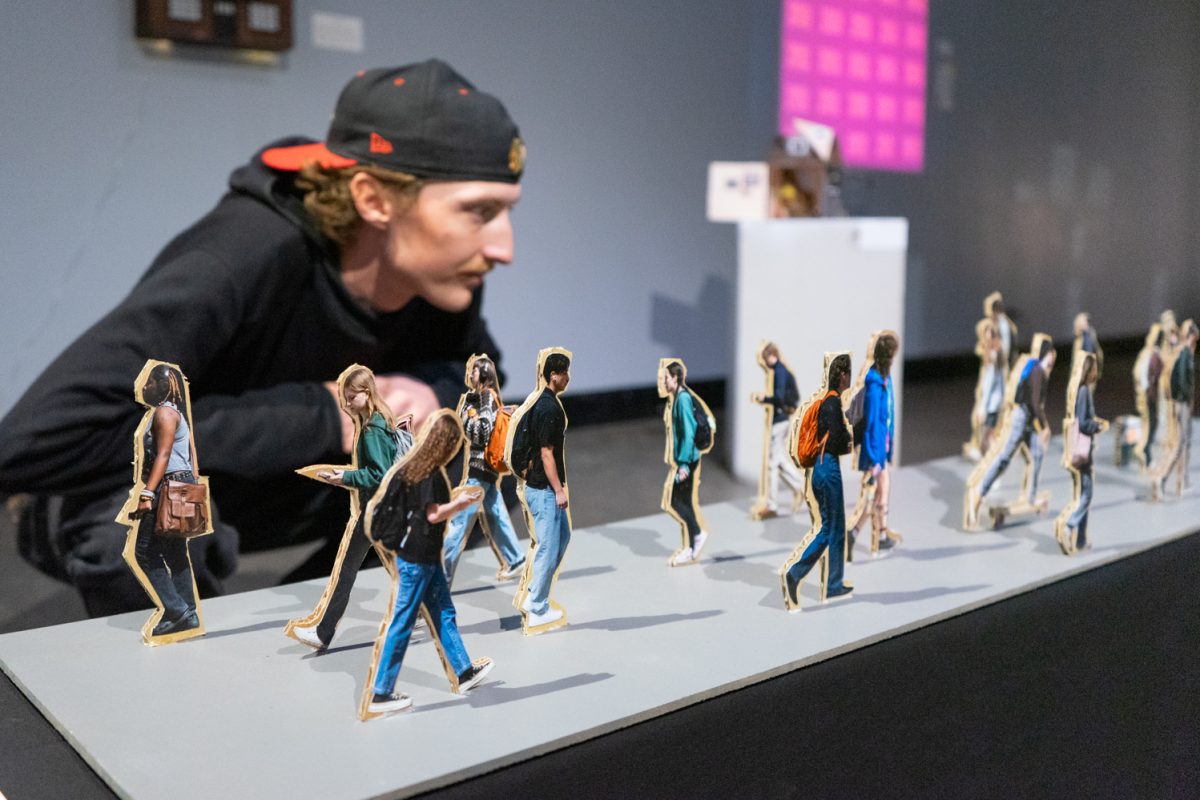
“Pompeii Archive: Recent Photographs,” the latest exhibit in the Gregory Allicar Museum of Art, captures the beauty and magnitude of history in the ancient Roman city.
The photographer for much of this exhibit is William Wylie. He is Professor of Art at the University of Virginia where he also coordinates the study abroad program in Italy. He is a CSU alum, having received his Bachelors of Fine Art.
According to the Gregory Allicar Museum of Art, his interest in Pompeii began when he started looking at work by Giorgio Sommer, who is also featured in this exhibit. There is a focus on “restoration, discovery and collection” of what remains of Pompeii, according to an artist statement featured along with the exhibit.
The 18 large scale pieces in this exhibit demonstrate an incredible attention to detail. Everything can be seen in the photographs, the dust, the stillness, the beauty.
The room is big and empty. As you walk and look at art, this contributes to the emptiness and the intensity of the photo’s subjects. There is not much in the exhibit other than the art itself. And with such a layout, you feel the immensity of the work and all it represents.
Everything is photographed in black and white, and the room matches. The room this exhibit is in has white walls and black benches to keep the focus on the art. The black and white element adds a whole other feeling that would not have been as intense if the photos were in color. It brings attention to the shapes, the details, the line, the form and the subjects themselves.

Some photos are focused on human figures and casts. In these, the feeling that comes with it is human connection. We are the same species, we walk the same Earth. It is somewhat surreal to see casts of bodies in black and white.
The architecture of the city is also captured. Some pieces show the society that inhabited Pompeii. With the mighty columns, the arches and even just simple walls. They are all representative of a society that came before us.
The history captured in the work is notable. Despite being buried by volcanic ash, the city stayed nearly intact, which is why it sparks interest in many archaeologists. This is also why the photographs are so detailed; there is so much detail to be seen.
The concept of life and death also presents itself in this exhibit. The casts of bodies are excellent examples of this. These people were once real people, and their legacy is in these casts and the history of their city. An atrium and garden also show up in the work, contributing to liveliness once in Pompeii.
Wylie is an incredibly skilled photographer and clearly knows his stuff. The photographs are visually appealing and follow many of the rules of photography, all while capturing the feeling of Pompeii.
One of my favorite pieces is one of the Amphitheater of Pompeii. It is an empty, black and white photo of this amphitheater, and it inspires thought. It is representative of something that was once so mighty and how it has fallen because of natural destruction yet is so well preserved. It strikes this emotion of emptiness and fragility.

The photos are simple yet complex and deep. To stand in front of these photos and to just be in the presence of art and history evokes special emotions.
Should you go see this exhibit? Absolutely
It is aesthetically pleasing, educational and emotion evoking. It makes the audience feel and get a taste of what the photographers experienced in Pompeii.
William Wylie Artist Talk:
- Thursday, Feb. 8
- Organ Recital Hall
- 5:00 p.m.
Collegian reporter Maddie Wright can be reached at entertainment@collegian.com or on Twitter @maddierwright.







